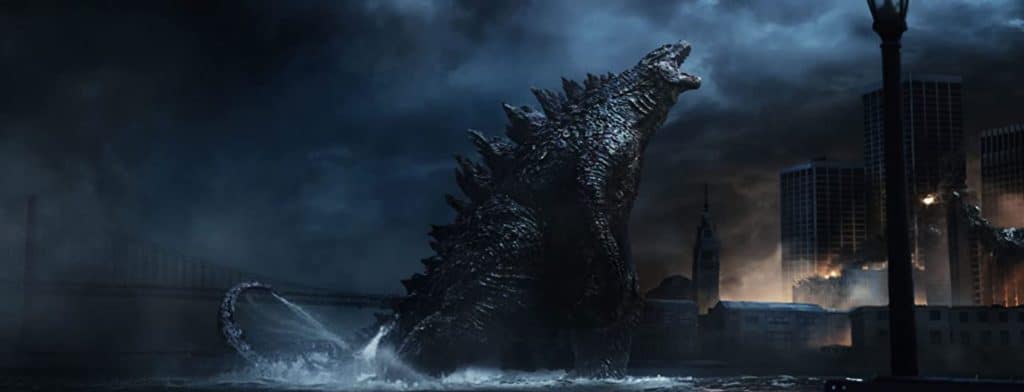
Monster Horror. Origins, Classics & Evolution Introductions!
The origin of monster horror is central to who we are as a species. Monsters mirror the trials we face. Monsters challenge our fragile grip on the world. Let’s look at the monster horror genre and some of the most infamous antagonists.
The origins of monster horror include Dracula (1931), Frankenstein (1931) The Bride of Frankenstein (1935), and the almighty King Kong (1933). Films honoring the original trio of monster horror include Bram Stoker’s Dracula (1992), the must-see Let the Right One In (2008) and the brilliant American remake Let Me In (2005).
Victor Frankenstein (2015), The Bride (1985), and a King Kong (1976) remake not only launched Jessica Lange’s career but also starred the newly erected Twin Towers in downtown Manhattan. An homage to the original King Kong (2005) by the great Hobbit trilogy director Peter Jackson reimagined the 1933 classic with rich storytelling and masterful special effects.
Proving the lasting power of the monster horror genre, Godzilla stomped through Japan in 1954 to rave reviews. American remakes in 1997 and 2014, loosely follow the original. Godzilla holds the record with 36 films in a 6-decade franchise.
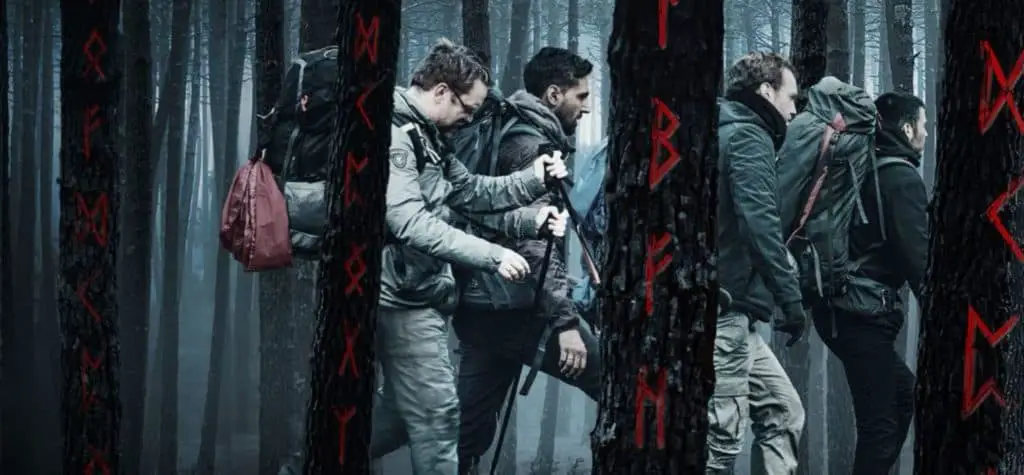
The Recipe for Great Monster Horror
Sweetheart (2019) has it all. A shipwreck and lone survivors. The dreadful fear of no rescue. A mysterious black hole in the ocean floor. On the other hand, The Ritual (2017) takes a hike in the woods and the “fear and misjudgments of four friends to create the perfect sense of pervasive doom.”
Silence proves as the perfect sound effect in director John Krasinski’s A Quiet Place (2018) and A Quiet Place, Part II (2020). Storming through theaters with a vengeance, the films explore a post-apocalyptic world, blind monsters which hunt using an acute sense of sound. With limited spoken dialogue, and sign language to make up the rest of the narrative, both films make snacking on popcorn, opening candy wrappers, eating ice, and slurping on soda criminal.
Splinter (2008) literally “gets under the skin.” After a road trip turns to a carjacking, and the SUV overheats at a remote gas station, all that’s left to do is hide, duck and cover from a splinter-infected, heat-seeking, body-loving, animal-monster! Don’t sweat, or they’ll find you.
Foraging for mushrooms is fun in The Hallow (2015) until they burst through an animal and it’s discovered that they’re really fairy-banshee and baby stealers. Great! And the couple with a newborn just bought the old house up the way to renovate. Why are all the neighbors so creepy? Combine Splinter with a touch of Sweetheart, and find out!
No monster film recipe would be complete without the icing on the cake: a mother pushed to the edge as her family is terrorized by their eight-year-old son’s imaginary friend in Z (2019). The film portrays “Parental fears in terrifying detail,” and, well, that’s as macabre as it gets. PS: Z is real.
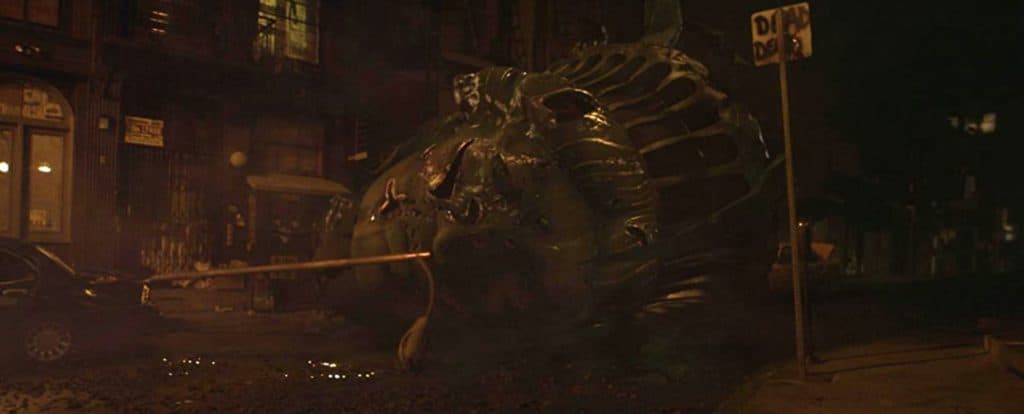
Other Monster Horror Delights
Spring (2014) introduces us to a young man discovering new coping mechanisms after the death of his mother and a violent altercation that finds him unemployed. While traversing across the Italian countryside he meets a mysterious young woman-mutant struggling with her immortality. Spring is a love story of sorts, which provokes the question of what exactly springs eternal as we age on the journey of our ever-changing, very human, and mortal lives.
The Mist (2007), a famous Stephen King novel is as heart-breaking as it is nerve-wracking. After a dense fog descends on a town, trapping many of its citizens inside a grocery store, tension mounts and personalities clash. Soon, the monster which inhabits the dense white cloud reveals itself to be a behemoth, tentacled, and very hungry creature. Then along come the giant spiders and flies. Who left that dimensional portal open?
Cloverfield (2008) came at a time when first-person POV and found footage films were all the rage. Set in New York City the story opens on a group of friends celebrating at a farewell party. An earthquake-like rumbling interrupts the celebration. As the party-goers head outside to catch a look at the scene, and film what’s happening, the Statue of Liberty’s head launches into the air and lands thousands of feet, on the street where they are standing.
It’s a heart-pounding race against time to save the lives of friends and loved ones and beat down an unknown species of giant city-smashing outer space monster and a pack of other creepy, eight-legged, fanged critters. All through a 24 mm lens!
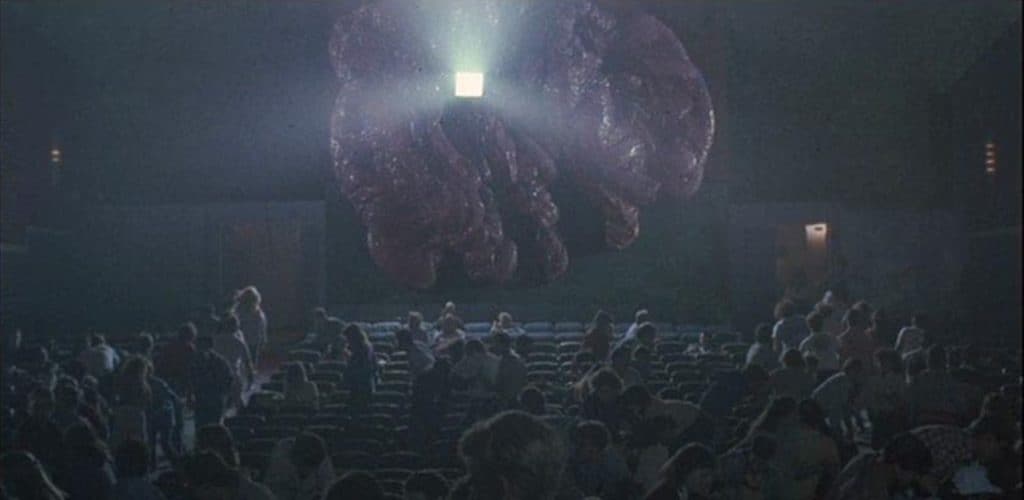
Cheesy Monster Horror
The Blob (1988) is an infamous movie monster and the remake of a drive-in movie classic from the 50s. After an elderly wanderer stumbles across a random meteor that strikes Earth, it breaks open to reveal a living slimy mold-like being. Reaching out to touch the substance the blog attacks and devours the man, then sets off on a mission to eat everything in sight. Like Jaws, but gooier, and without the ocean!
13 Ghosts (2001) is a carnival freakshow. After the death of an eccentric ghost hunter, a man discovers he is the sole heir to the estate. His family soon discovers that the house they’ve inherited is anything but normal. It’s actually a puzzle of rooms, and moving glass walls, controlled by a combination metal lock in the floor of the main hall. And each cell contains one of 13 terrifying ghosts.
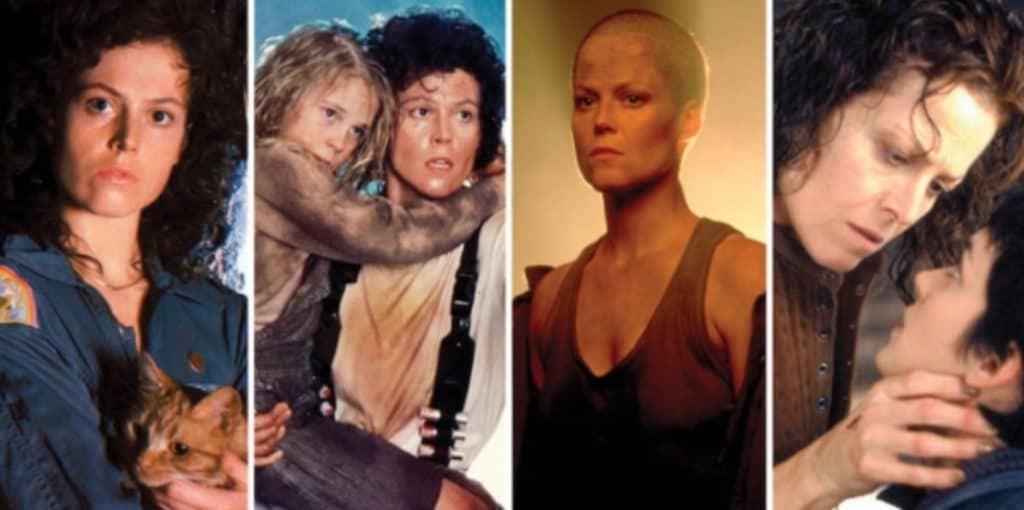
Alien Monster Horror
If it weren’t for the genius of director Ridley Scott, Alien (1979) would never have happened. Thank goodness it did. The film changed the landscape of both the horror genre and the science fiction genre. Horror-wise, it proved how corporate greed considered human life expendable. The synthetic android Ash was not to be trusted.
The film also sheds light on a group of selfish ragtag miners forced to band together and fight for their lives. Scott’s choice to pit a female lead, against the Xenomorph monster changed the hero trope forever. The now infamous actress, Sigourney Weaver, was cast in a life-changing role as warrant officer Ellen Louise Ripley. Her character “is often considered one of the most significant female protagonists in cinematic history, and is a prominent figure in popular culture.[1]“
Ultimately, the movie exposed a raw kind of emotion never seen in science fiction films before. A raw, nervous, desperate kind of kinetic energy fueled by an Alien creature. One that can only be described as ahead of its time, and scarier than anything that had come before it – and to some, since.
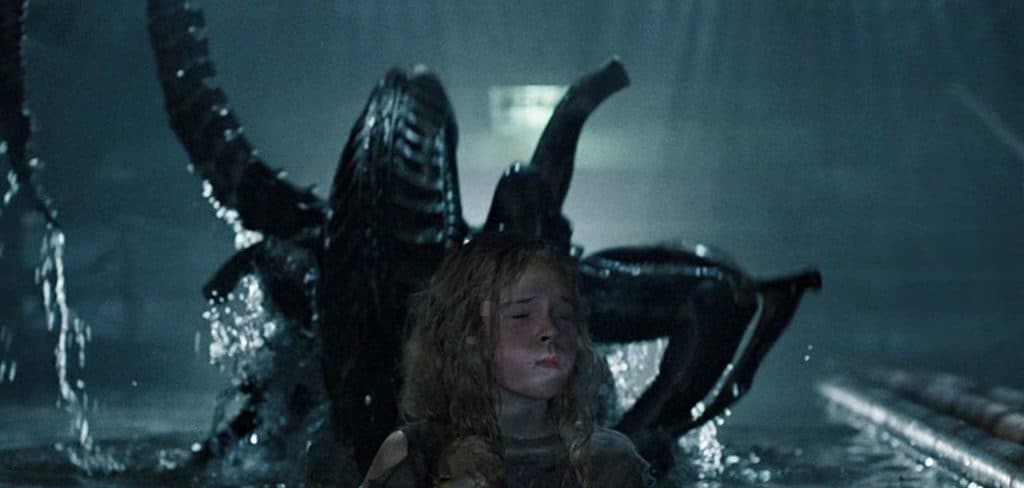
Aliens – One of Hell of a Sequel
After communications are lost with a human colony on the moon on which Ripley’s crew first encountered the alien creatures, Aliens (1986) ushered in by director James Cameron, gave audiences more screaming in space, quadrupled the number of killer Xenomorphs, introduced an egg-laying, overprotective queen alien, and a pumped-up, rag-tag band of egotistical Colonial Marines. Plus, the science fiction genre got more Ellen Ripley, kick-ass, female antagonist realness. However, this time around, trusting the synthetic android Bishop was central to the film.
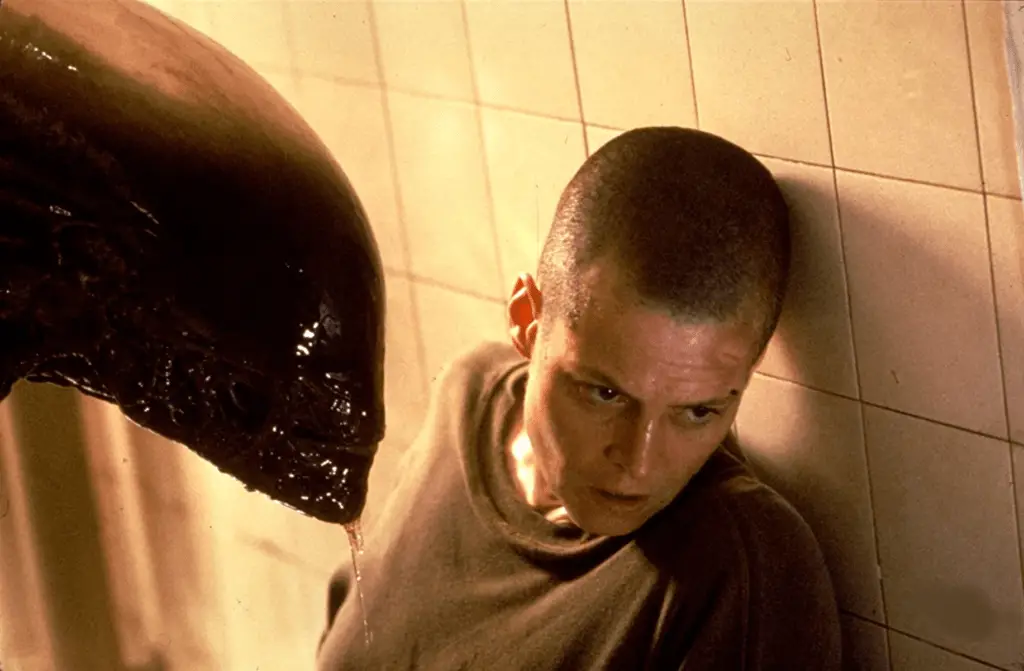
The Continuing Alien Saga
Alien 3 (1992) directed by the brilliant David Fincher, continues the fight between human and extraterrestrial, after Ripley crash lands on a dark, distant planet named Fiorina “Fury” 161. The AI in the getaway spaceship Sulaco discovers a Xenomorph embryo on board. It ejects the life pod Ripley and the other survivors have escaped in. Between the ship catching fire and the impact on the planet, Ripley is the only survivor.
Rescued by the maximum-security inmates on the planet’s correctional facility Ripley awakens in the prison infirmary. While exploring the wreckage of the escape pod she finds the remains of Bishop. He informs her an alien embryo was inside the escape pod. It gestated inside one of the Sulaco survivors. The inmates, uncomfortable having a female in the prison camp, learn an alien is on the loose. Ripley must instill trust in the prisoners, and plan the perfect Alien ambush.
As the plan unfolds, Ripley learns the corrupt Weyland Corp. is arriving. To take the last remaining embryo, which has been gestating inside her since the escape pod crashed.
Alien Resurrection (1997) takes place two hundred years after the events of Alien 3. The plan is to create a clone with an alien embryo inside it. A lab on a spacecraft named USM Auriga extracts and raises the alien and the eggs it lays are collected. The clone, Ripley 8 is kept alive for further study.
Ripley 8 has enhanced strength and reflexes, and somewhat acidic blood. She also has a psychic link to the Xenomorphs being raised in the lab’s nursery. Conversely, the Xenomorph’s genetic makeup allows them to have some of Ripley’s memories.
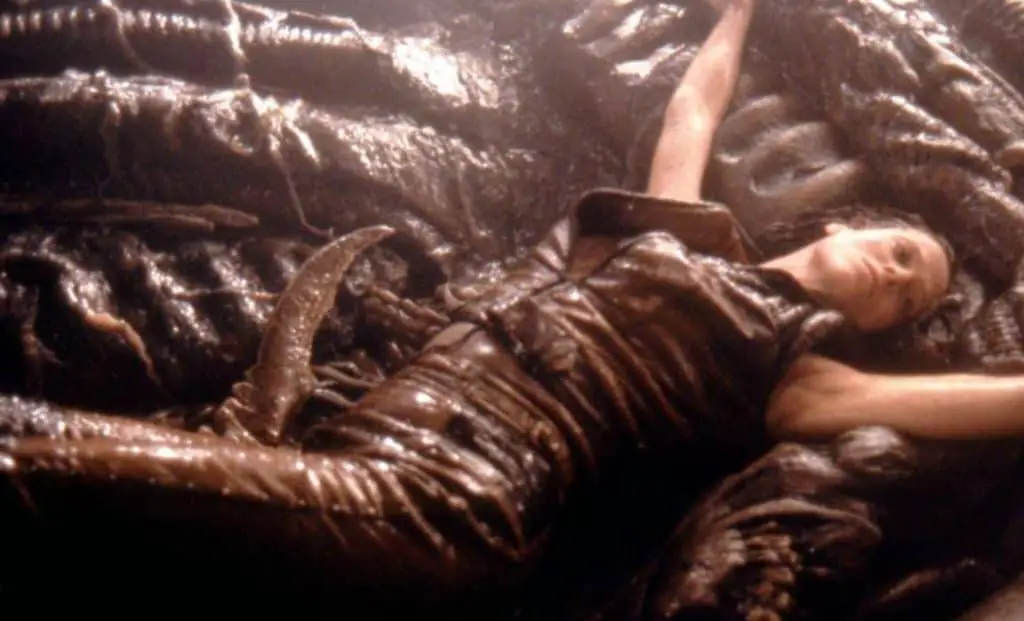
Why We Love Monster Horror
This is just the tip of the monster horror iceberg. What lies beneath the surface is a vast collection of thrilling films. Advancements in technological achievement have allowed audiences to see new kinds of monster horror: big, mean, drooling, and terrifying! But it’s the infamous movie monsters, of the 1930s, we need to thank for the inspiration.
Why do we love monster horror? According to Stephen Fox, of the Scarlet Review, “The origins of monster horror has arguably become that of the enemy. An enemy whose defeat inspires us to be like the heroes of old. “Monsters, then, are a fundamental piece of who we are as a species, reminding us of our past, enticing us to explore far-off lands, while also deterring us from entering treacherous areas, and motivating us to become greater than what we once feared.[2]”
[1] “Ellen Ripley — Google Arts & Culture.” https://artsandculture.google.com/entity/ellen-ripley/m02xd83?hl=en. Accessed 17 Jul. 2021.
[2] “The Importance of Monsters – The Scarlet Review.” https://scarletreview.camden.rutgers.edu/theimportanceofmonsters.html. Accessed 17 Jul. 2021.